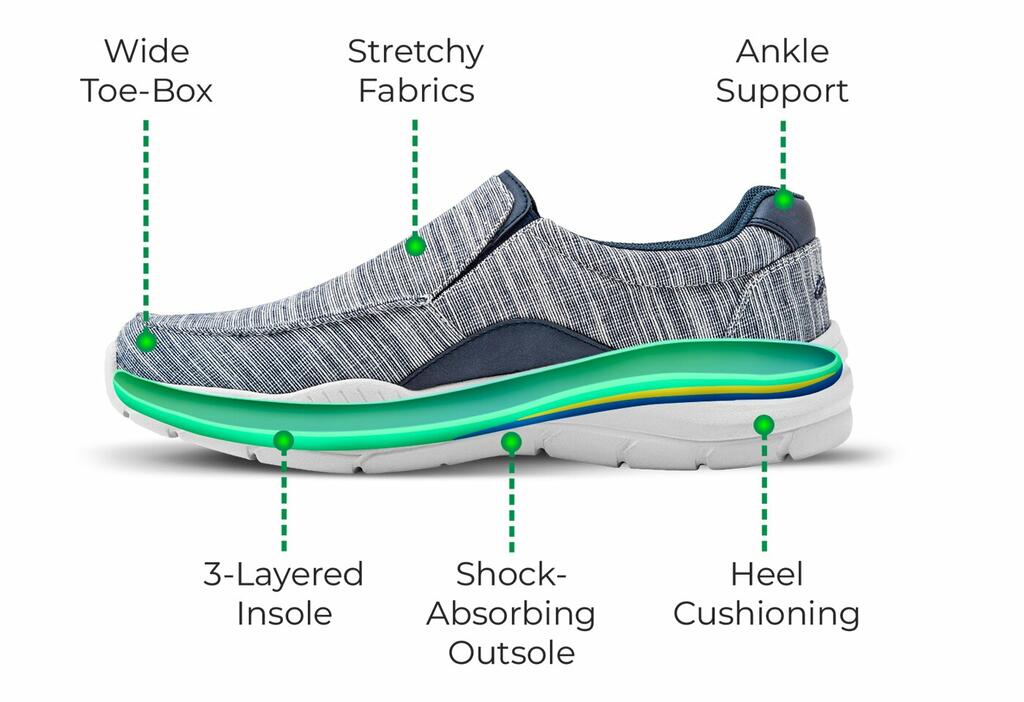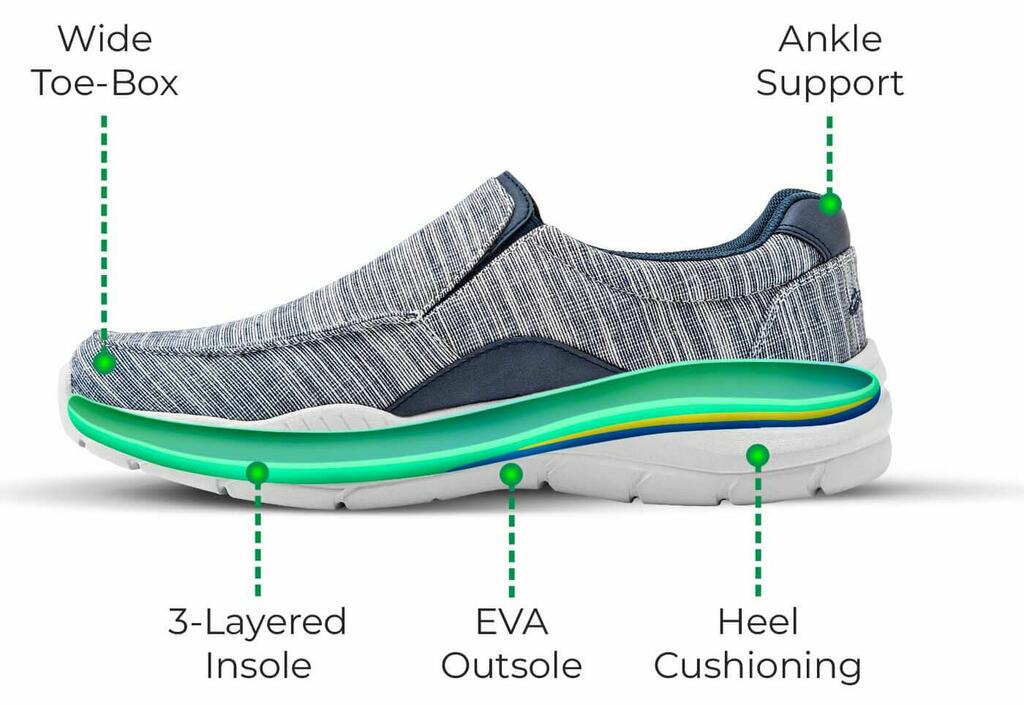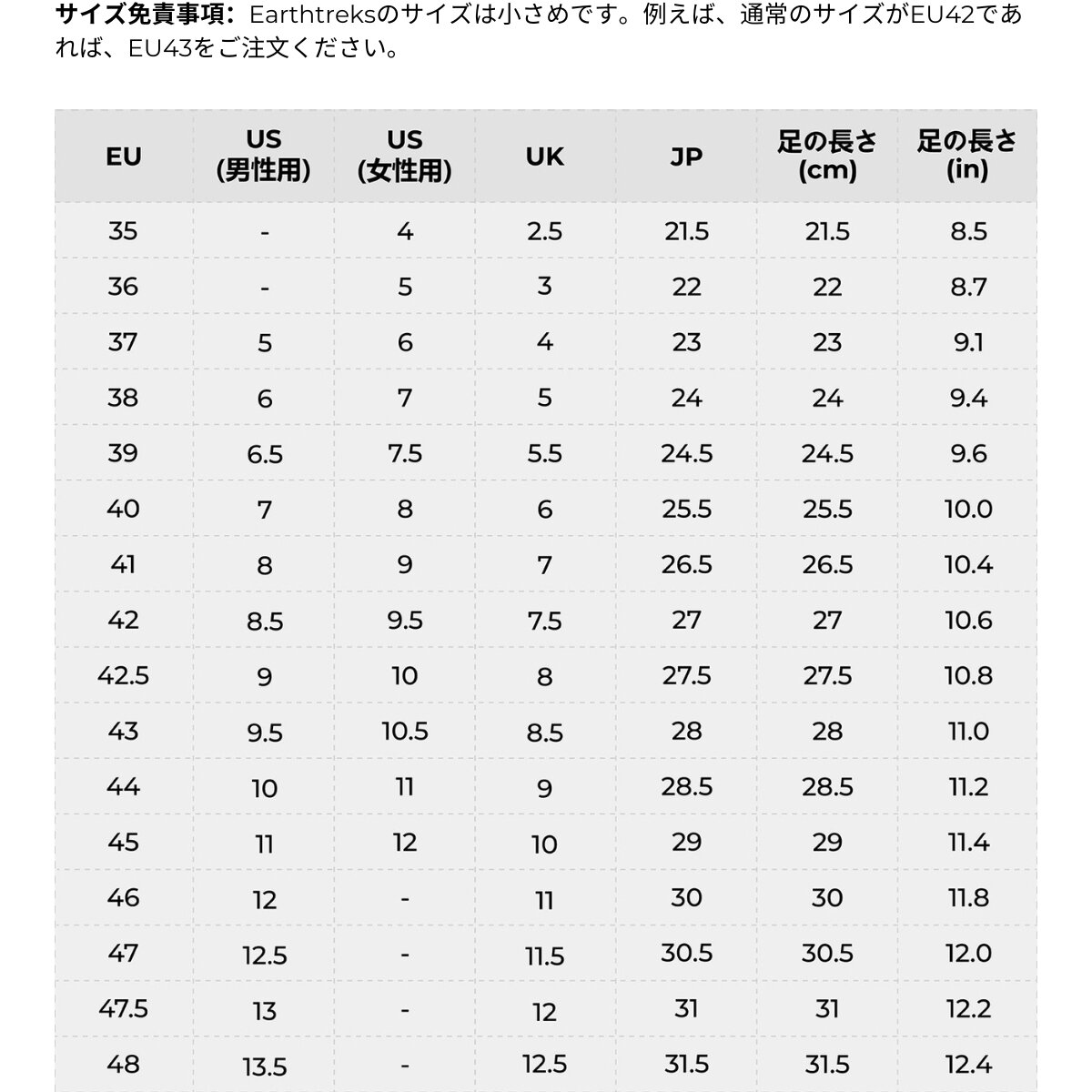Switching to Canles footwear was a game-changer for me. Dealing with arthritic pain in both of my feet used to make each step a struggle. However, within a few days of wearing these shoes, I noticed a dramatic decrease in discomfort.
When it comes to managing diabetes, every detail counts, especially when it concerns your feet. For men battling this relentless condition, swollen feet are a common yet painful reality. But there’s hope in the form of diabetic shoes. This article dives into how diabetic shoes for men offer a beacon of relief and support amidst the challenges of swollen feet.
Understanding Diabetes and Its Impact on Feet
Living with diabetes means you’ve got to be extra careful about your health, especially when it comes to your feet. You see, diabetes has a way of making small problems bigger, especially if your blood sugar levels aren’t well managed. Here’s what happens:
- Nerve Damage: High blood sugar levels can damage the nerves in your feet. This condition, known as neuropathy, can lead to tingling, pain, or even a loss of feeling. Imagine not feeling a small pebble in your shoe; it can lead to a sore or an ulcer without you even noticing.
- Poor Circulation: Diabetes can also affect the blood flow to your feet, making it harder for wounds to heal. If you get a cut or a blister, poor circulation can turn these minor injuries into serious infections.
- Increased Risk of Infection: Your feet become more prone to infections if diabetes is in the picture. Due to the reduced sensation (from nerve damage) and poor healing (because of inadequate blood flow), even the most minor cuts can escalate into severe problems.
The Challenge of Swollen Feet for Diabetic Men
Swollen feet, or what doctors call “edema,” can be a real thorn in your side if you’re a man dealing with diabetes. This swelling isn’t just about your feet looking bigger. It can lead to discomfort, pain, and even more serious problems down the road. But why does this happen, especially for men with diabetes? Let’s break it down:
- Fluid Buildup: One of the main culprits behind swollen feet is the accumulation of fluid in the tissues. When you have diabetes, your body’s ability to manage fluids and electrolytes gets thrown off balance, leading to this unwelcome swelling.
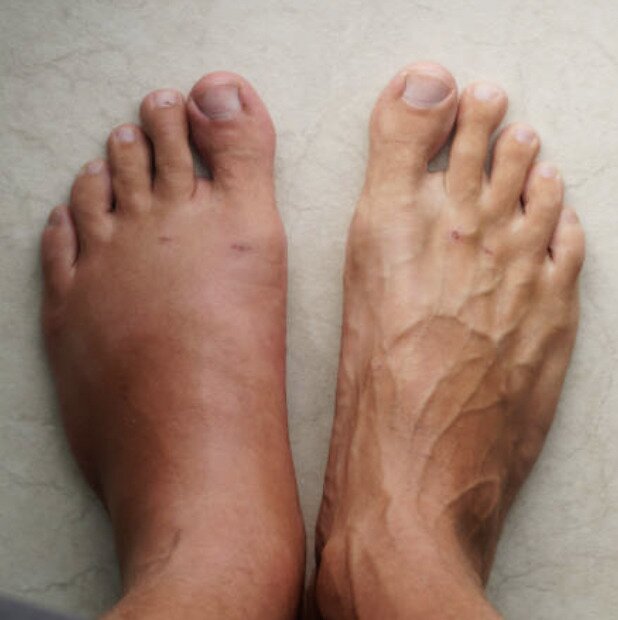
- Heart and Kidney Overload: Diabetes can put a strain on your heart and kidneys, organs that play key roles in managing fluid levels in your body. If they’re not working as they should, fluid can start to pool in your feet and ankles.

- Less Activity: Sometimes, managing diabetes can make you feel like taking it easy and not moving around much. Less physical activity means your circulation might not be doing its best work, which can also lead to swelling.

Why It's More Than Just a Comfort Issue
You might think swollen feet are just an uncomfortable annoyance, something to put your feet up at the end of the day and forget about. But it’s important to take this symptom seriously. Swelling can lead to:
- Difficulty in Finding Shoes That Fit: Swollen feet can make it hard to find comfortable, well-fitting shoes. This isn’t just about comfort; ill-fitting shoes can lead to blisters and sores that are hard to heal if you have diabetes.
- Increased Risk of Infection: Swelling can stretch your skin, making it more susceptible to cracks and wounds. And when you have diabetes, these wounds can turn into serious infections before you know it.
- Mobility Issues: Let’s face it, swollen feet make it hard to get around. This can affect your daily activities and overall quality of life.
How Diabetic Shoes
Help Men with Swollen Feet
If you’re grappling with swollen feet, finding shoes that fit comfortably might feel like a quest for the Holy Grail. Enter diabetic shoes for men – a game changer in managing diabetes-related foot issues. But what makes them so special? Let’s dive in:
- Extra Room for Comfort: Diabetic shoes are designed with more space inside, particularly for swollen feet. This means your feet have room to breathe without being squeezed, reducing discomfort and the risk of skin breakdown.
- Support Where It’s Needed: These shoes aren’t just about space; they provide targeted support to areas that need it most. This can help redistribute your weight evenly when you walk, reducing pressure on any one part of your foot and minimizing pain.
- Adjustability for Changing Needs: Swollen feet can vary in severity from day to day. Diabetic shoes often come with adjustable straps or laces, allowing you to customize the fit as needed. This flexibility is key to managing swelling effectively.
- Materials That Make a Difference: The materials used in diabetic shoes are chosen with care. Breathable fabrics help keep your feet dry, preventing infections. Soft, seamless interiors reduce the risk of rubbing and blisters, which are more problematic when your feet are swollen.
- Preventing Complications Before They Start: Perhaps the most critical aspect of diabetic shoes is their role in preventing further complications. By accommodating swollen feet comfortably, these shoes help avoid cuts, sores, and blisters that can lead to serious infections. In the long run, they’re not just shoes; they’re a preventive measure for keeping your feet healthy.

★★★★★ (1042)
Canles Caldon Sliders
$69.99
Why Every Detail Matters
Key Features to Look for in Diabetic Shoes for Men
When you’re on the hunt for diabetic shoes, it’s not just about picking any pair off the shelf. There are specific features designed to address the unique needs of men with diabetes, especially those dealing with swollen feet. Here’s what to keep an eye out for:
Non-binding Uppers:

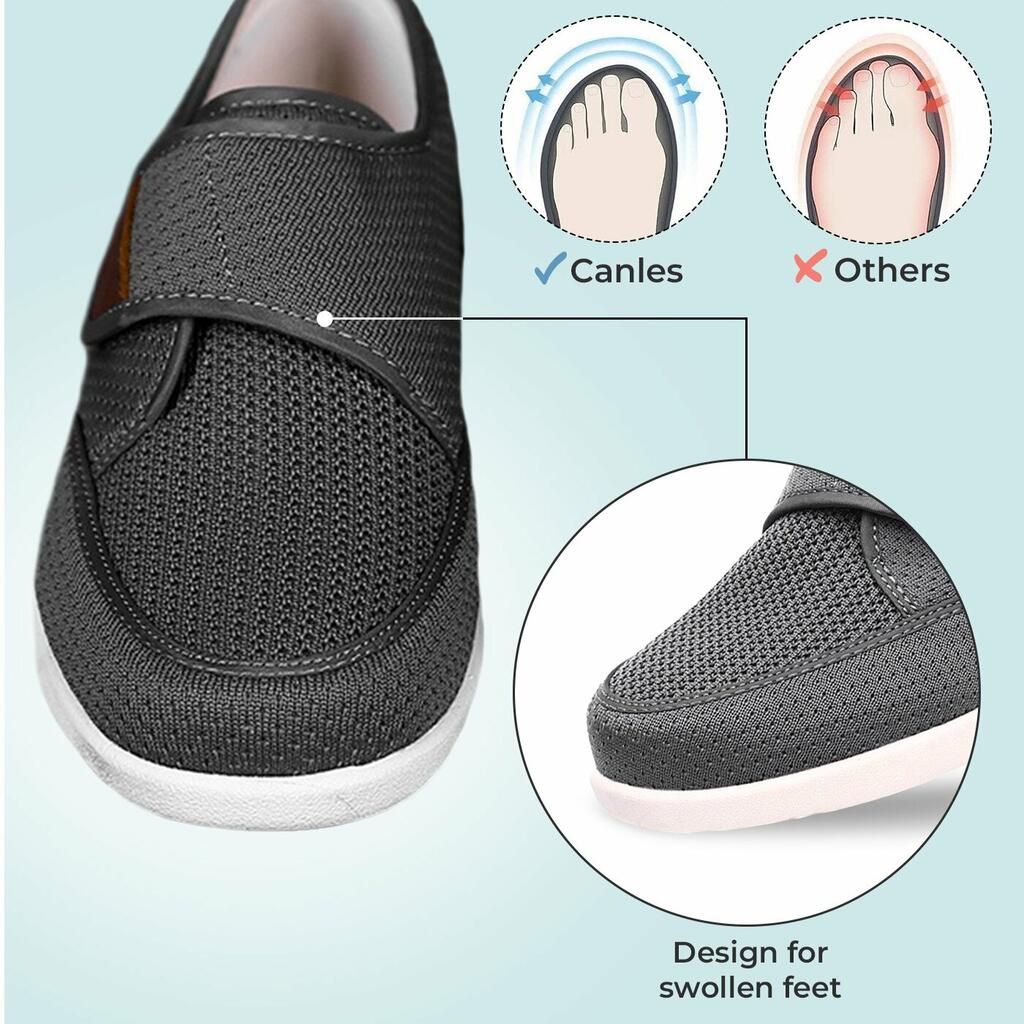
Deep Toe Boxes:
Breathable Materials:
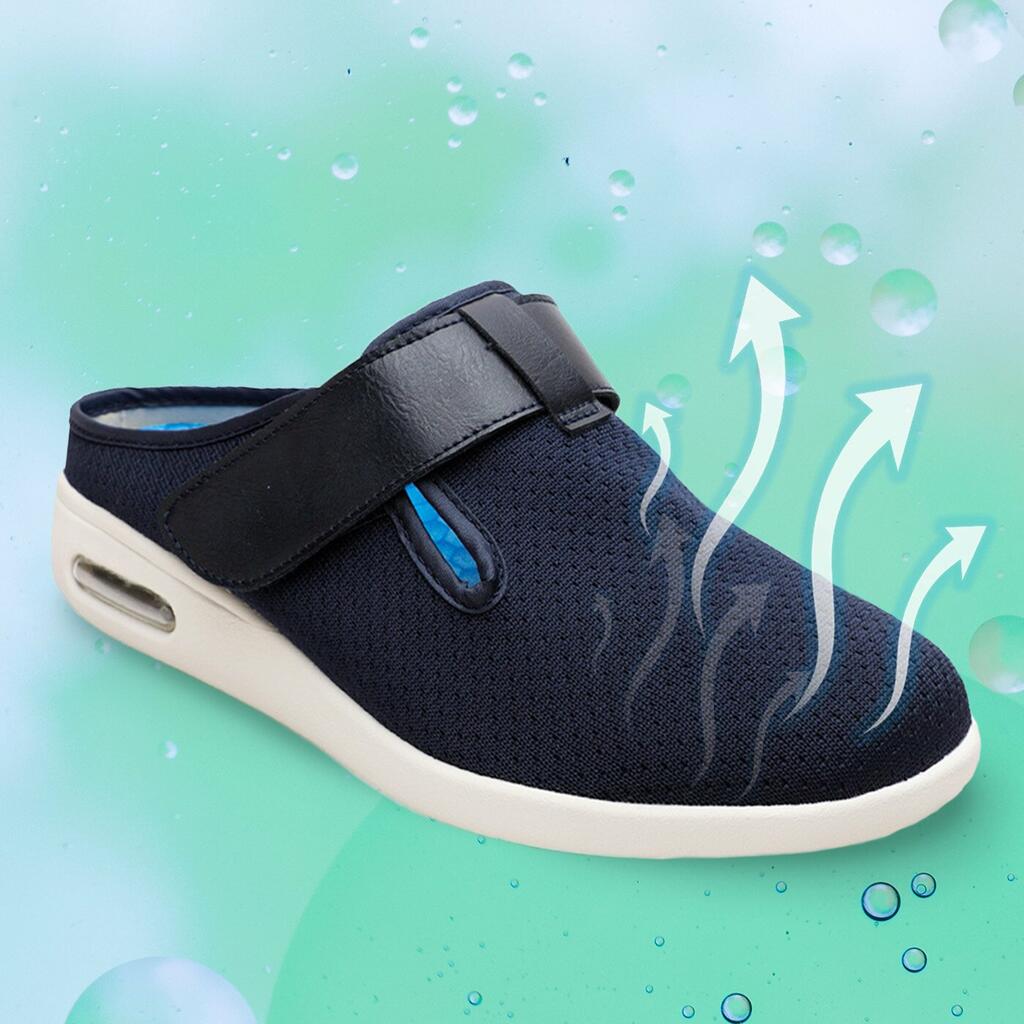

Firm Heel Counters:
Adjustable Fit:
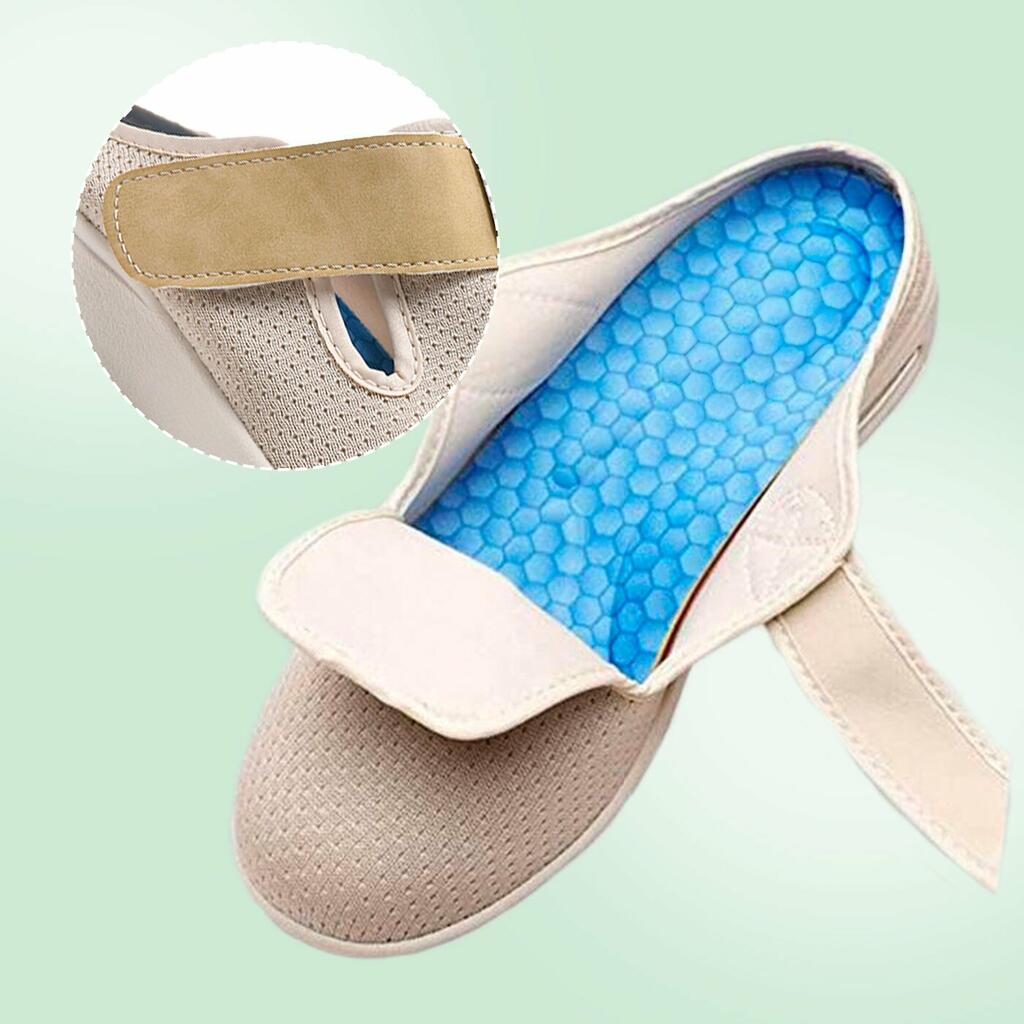
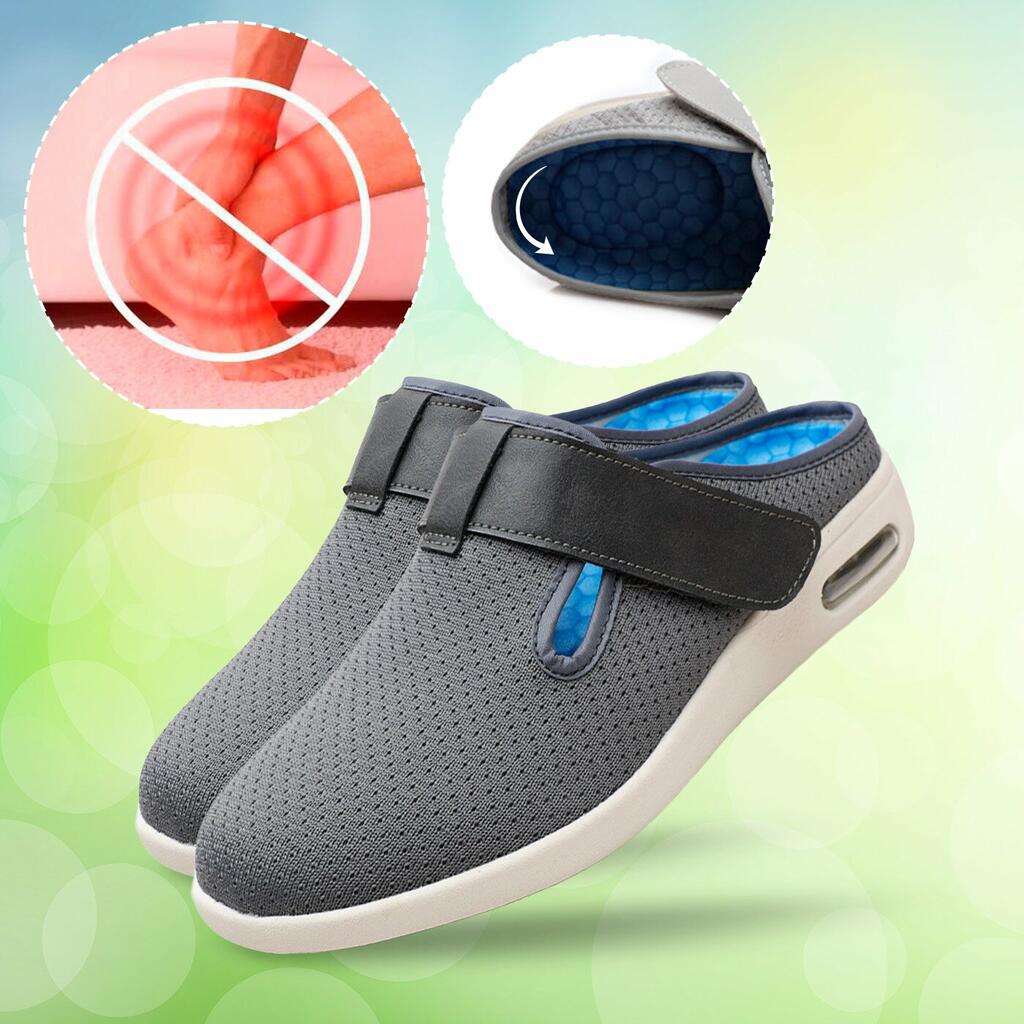
Seamless Interior:
A smooth, seam-free interior reduces friction and the risk of blisters or sores, important for feet that might not feel these issues until they’ve become severe.
Thick, Cushioned Soles:
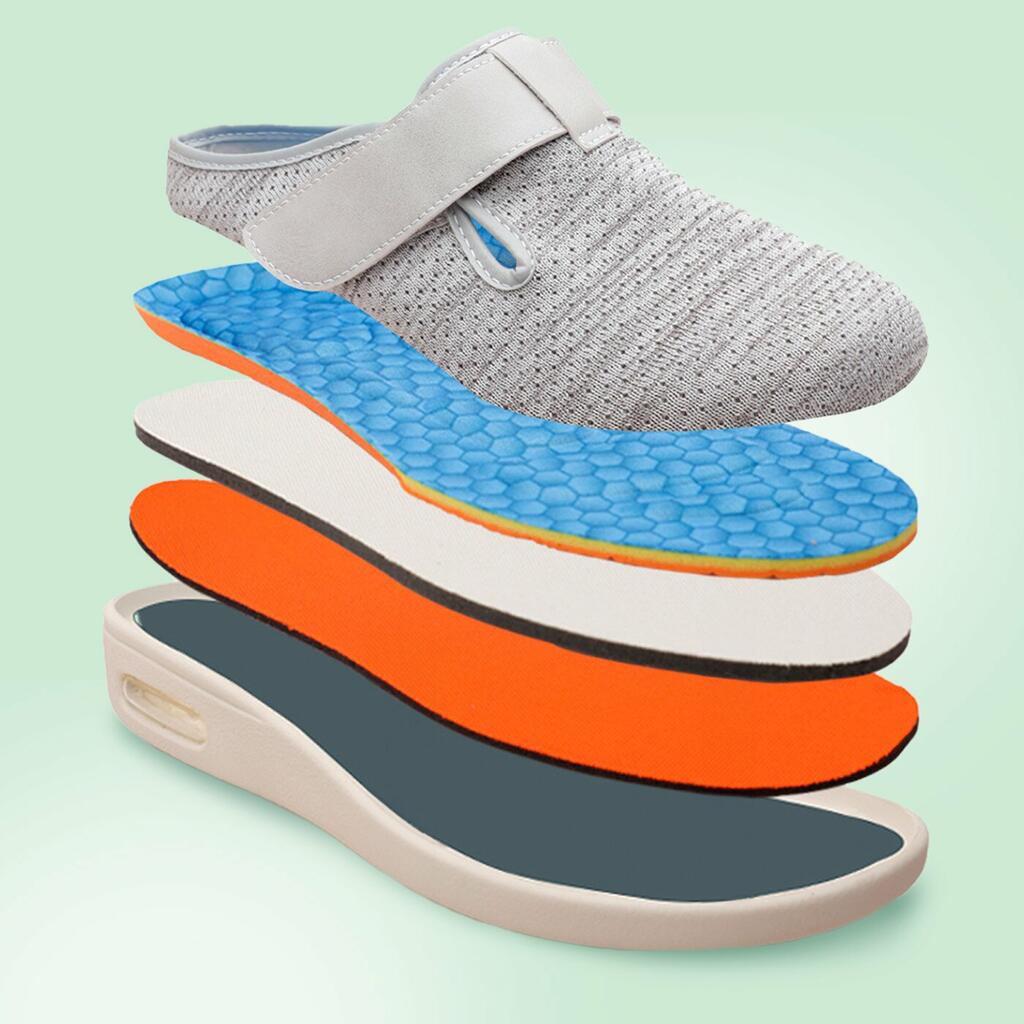
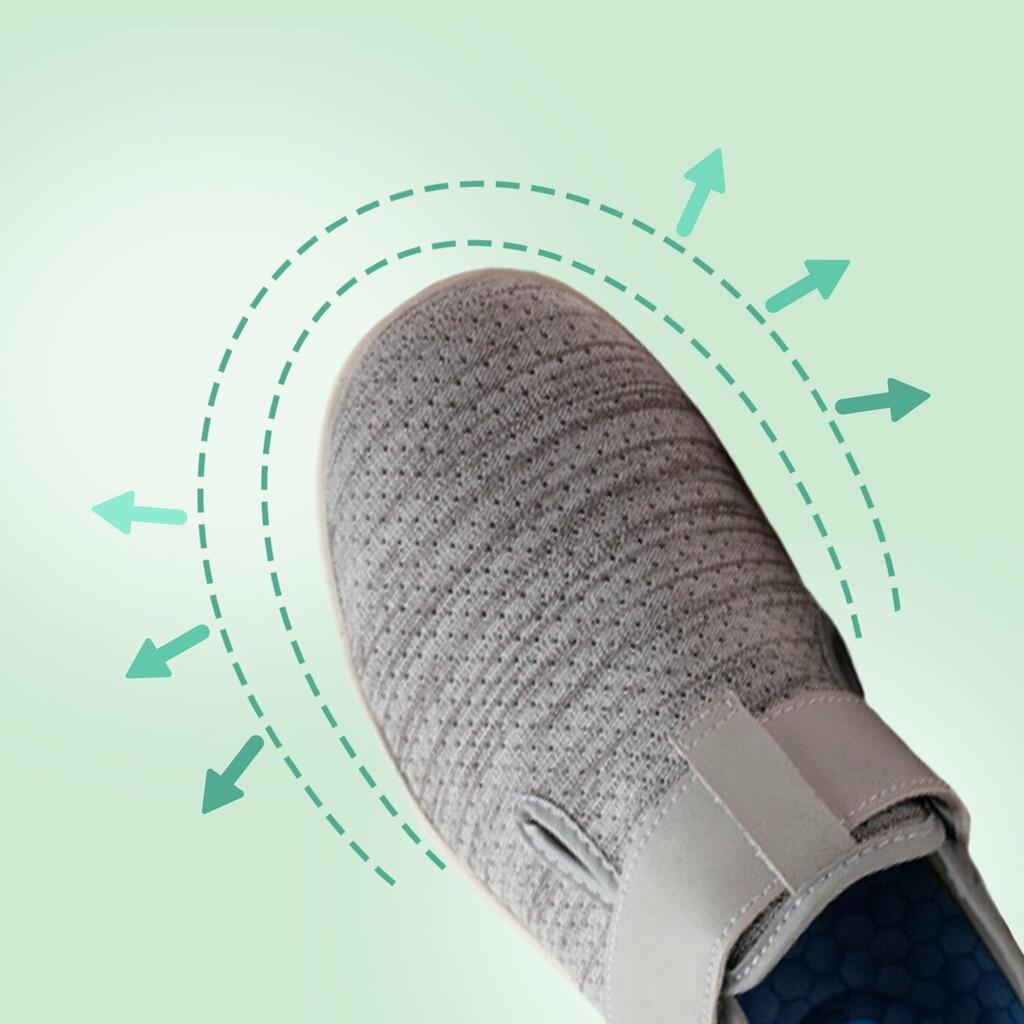
Wide Width Options:
Easy to Put On and Take Off:


Antimicrobial Features:
Slip-resistant Outsoles:
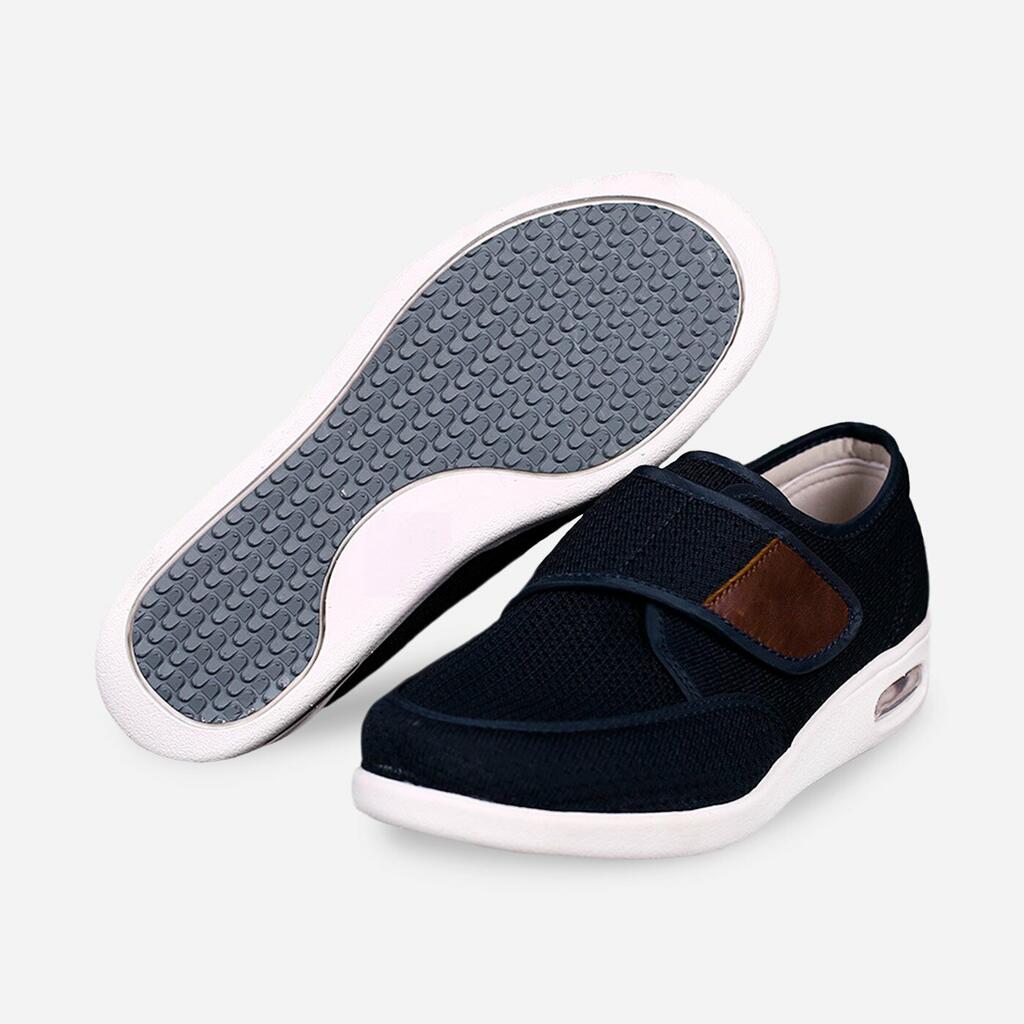
Our Final Thoughts
Diabetic shoes for men offer more than just footwear; they provide a foundation for healthier foot care in diabetes management. By understanding the importance of specialized shoes, you can take proactive steps towards comfort, prevention, and overall well-being.
Remember, the right pair of diabetic shoes can make a significant difference in your daily life, transforming painful steps into strides of comfort and confidence.
Don’t let swollen feet hinder your journey with diabetes. Explore our collection of articles on diabetic foot care and take the first step towards empowered living. For personalized advice, consider consulting with a healthcare professional who understands your needs.



